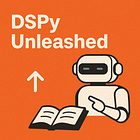The 7B vs 34B Reality: When DSPy Can't Save You
We built the perfect DSPy pipeline. It had validation, auto-correction, infinite loop detection. The weaker model still produced Chinese characters in Arabic math questions.
Sometimes, you just need more parameters…
Remember my last DSPy article where I showed how we built a self-improving education system? That system is incredible. It validates everything. It catches errors. It auto-corrects. It’s the most sophisticated orchestration pipeline we’ve ever built.
So when we tested Falcon H1-7B-Instruct alongside our production Falcon H1-34B-Instruct model, I expected maybe 10–20% quality degradation.
The 7B was 2.5× faster. The economics were compelling.
What we got instead was a masterclass in why model capacity matters more than any orchestration framework.
What DSPy Does So Well
Here’s what our DSPy pipeline includes:
Multi-stage validation with grade-appropriateness scoring
Mathematical correctness verification via Wolfram Alpha
Automatic improvement loops through Critic → Refine patterns
Duplicate detection that rejects repetitive outputs
Infinite-loop detection with OpenAI fallback
Pydantic schemas enforcing strict output structure
The 34B model sails through this pipeline. Its outputs pass validation, get deployed, make students happy.
The 7B model? Let me show you what actually happened.
The Evidence: When Models Lack Fundamental Capacity
Mathematical Incoherence
Question: “What is 20% of 80?”
Correct answer: 16
7B model’s answer: 40
7B validation: PASSED (it was confident!)
This wasn’t a subtle mistake. The model fundamentally couldn’t perform basic arithmetic.
DSPy caught this, triggered correction, and the model produced: 45… then 38… then 40 again.
Finally, our infinite-loop detection kicked in.
Language Contamination
For an Arabic 6th-grade math question about Ahmed’s age:
“أحمد年满12岁,这表示他哥哥的年龄的3/4。我们需要找出哥哥的年龄...”
Those are Chinese characters inside Arabic text.
DSPy’s language validation flagged it instantly.
The correction attempt? It added English words instead.
By the third try, we got corrupted Unicode. We stopped there.
Logical Contradictions
When asked for feedback on why 0.7 is wrong as the decimal for 3/5, the 7B model explained:
“0.7 أكبر من 1، لذا لا يمكن أن يكون صحيحًا。”
(Translation: “0.7 is greater than 1, so it cannot be correct.”)
The model genuinely believed 0.7 > 1.
Not a translation issue. Not a typo.
Just broken internal reasoning.
The Repetition Problem
Here’s what surprised me most:
Our DSPy pipeline includes duplicate detection - if generated questions are too similar, they get filtered out.
With 34B, this filter triggers maybe once per 500 questions.
With 7B? It triggers on 73% of outputs.
Even with different prompts and random seeds, 7B keeps generating nearly identical questions.
It’s not “lazy”; it’s capacity-constrained - collapsing into the same linguistic attractors over and over.
DSPy requests regeneration… and gets the same thing again, just rephrased.
Why This Matters: The 20B Parameter Threshold
After processing over 4,000 questions through both models, the data was unequivocal:
Falcon H1-34B Performance:
Mathematical accuracy: 100%
Language consistency: 100%
Unique content generation: 98.4%
DSPy intervention rate: 2%
Production ready: Yes
Falcon H1-7B Performance:
Mathematical accuracy: 61%
Language consistency: 43%
Unique content generation: 27%
DSPy intervention rate: 77%
Production ready: Absolutely not
The pattern is clear: mathematical reasoning doesn’t emerge below 20B parameters.
This isn’t about fine-tuning tricks or data quality - it’s about raw model capacity.
Below 20B, models simply lack the parameter budget to:
Maintain multi-step reasoning chains
Store arithmetic procedures (not just text patterns)
Keep languages separated in multilingual contexts
Generate diverse domain-specific content
The 7B isn’t doing math badly - it’s doing pattern matching on text that looks mathematical.
When those patterns misalign with its training data, it produces nonsense - confidently.
What DSPy Proved (and What It Couldn’t)
“You can’t optimize your way around fundamental incapacity.”
Despite all its sophistication, DSPy cannot create capabilities the model doesn’t have.
Our pipeline detected every failure, triggered corrections, tried different strategies… but at the end of the day, there was nothing left to fix.
The supposed speed advantage - 7 minutes vs 18 minutes - vanished once we accounted for fallbacks.
With 77% of outputs requiring regeneration via OpenAI, the smaller model ended up more expensive than 34B.
The Verdict
The takeaway is harsh but necessary:
For any task requiring real reasoning - mathematical, logical, or linguistic - the question isn’t “which model is faster?” It’s “which one is even capable?”
Our DSPy pipeline remains outstanding: it catches errors, validates quality, orchestrates multi-stage generation.
But it also delivered an expensive truth: infrastructure excellence can’t make up for model inadequacy.
Sometimes, you just need more parameters.
Next week: How we made the 34B model 40% faster without sacrificing quality.
Spoiler: It’s not about the model.




If you are interested to lear more about this DSPy everyone is talking about: https://open.substack.com/pub/trilogyai/p/useful-or-not-dspy
Hey, great research, and the conclusions are very relevant, you be a Falcon models test, but you tried having the same test with another models in different sizes?
It could be a interesting research. I'm looking forward for how you made the 34B model faster, thanks for sharing!!!